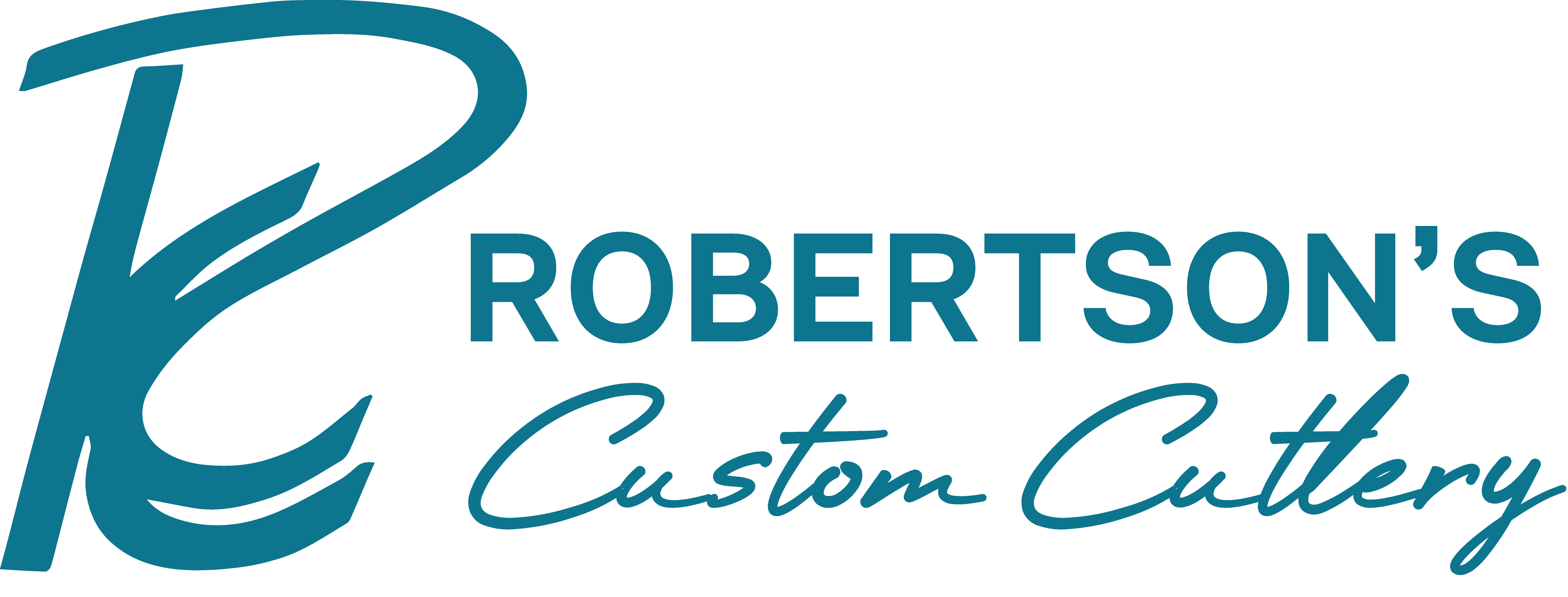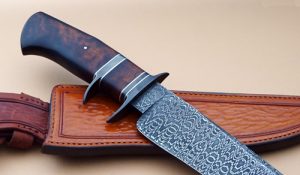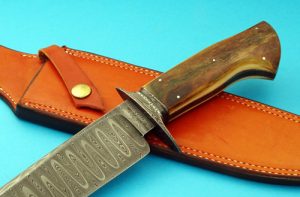Custom Knives and Custom Knife Making
Why a custom knife?
As the name implies, custom knives can be made to your needs and/or specifications. This is not the case with factory knives. You buy what they want you to buy. Your particular wants and desires are not taken into account. To be fair, when you are buying a $30 knife made in China, there is only so much you can expect out of it. The two biggest differences between custom knives and factory knives are the quality of the materials used and in the case of custom knives, you have one person doing all the work on your knife.
Custom Knives are all about YOU!
The style, feel, weight, balance, materials used, the design elements incorporated into the knife, are all up to you. Unlike factory knives, the construction and quality are not designed for planned obsolesce. You know your TV, refrigerator, and car are eventually going to need work done usually, within a week or two after the warranty expires.
Quality materials and exceptional materials create a knife just for your use. Custom knives are built to last and can be handed down from generation to generation.
How Custom Knives are made.
Custom knives are made by utilizing two main methods; stock removal and forging. Stock removal entails buying a piece of steel, scribing or drawing the pattern on the blade then cut it out to the desired shape. Forging entails buying a piece of steel, heating up and utilizing a hammer to forge the blade close to the desired shape. After that, the methods of creating a custom knife become very similar.
 What do you want from a knife?
What do you want from a knife?
This is what really sets custom knives apart from factory knives. When it comes to a custom knife, you get to pick are alter a design. You get to choose the steel, the finish, the handle material, the guard/bolster material, and additional design elements; i.e. thong hole or file work.
Steel
Every aspect of a custom knife is better than any factory knife you will buy. Starting with the most important part of the custom knife; the steel. Factories buy what are referred to as “mill runs.” Ever seen a photo of the huge roll of steel weighing several tons? That is a mill run. The chances are very good that there will be defective pieces of steel in this mill run. This will not be known until the blade is cut (by machines) and put into the heat-treating oven. After they are removed and are ground it is then the defects will appear. Heat treating is what turns a piece of steel into a knife as opposed to a spatula or a paint scraper. Having your heat-treating oven calibrated correctly to the specifications required by the manufacturer is very important. Imagine thousands of blades being heat-treated at the same time. Do you think the calibrations required are met in every square inch of that oven? What do you think happens to those blades that aren’t heat treated properly? Remember this the next time you buy factory knives that are at a flea market or gun show or even on the late-night factory knife shows.
Custom knife makers heat-treat (depending on the size of the oven and the size of the blade) between 1 and 4 blades per session. Which do you think has better quality control? Once heat treated the custom knifemaker will test the Rockwell harness on each blade. The Rockwell hardness will give you a range of the hardness of the steel. Different steels and functions require different Rockwell (RC) hardness. Examples; ax and machetes would be made using softer steels, thus a lower RC. Whereas custom knives would require a higher RC due to the edge that will be put on these.
On factory knives, the RC will be tested on one or two knives. Whereas with custom knives, each knives RC is tested. Ensuring that the steel was heat-treated properly. What about those without the proper RC? Remember the flea market, gun shows, and late-night TV cutlery shows?
The blade finish is primarily determined by the composition of the steel. The more chrome, the shiner the blade can be. Most factory blades utilize stainless steel. Note, there is no such thing. That is a marketing term. Meat, vegetables, and even certain vegetation will stain your blade. The same for any steel that claims to be rustproof. Again, that doesn’t exist. Take your favorite steel, put it in saltwater, then set it in the sun. Sit back and wait for the orange specs to appear.
Most factory knives feature a “factory finish.” Basically, the blades are thrown into a tumbler resulting in more of a flat matt finish. Quick, easy and machines do it all.
Custom knife makers do on occasion utilize a tumbled finish. But it is usually only a few blades and the media to get the desired result is matched to the steel. It is not a one-size-fits-all.
For the most part, the blade finish on a custom knife is done with the maker standing in front of a machine that spins a sandpaper strip. No, this is not the sandpaper you have at your house. This sandpaper starts at about 400 grit and goes up to 1200 grit. This depends on the finish the maker feels best shows off their work. Above 1200 grit, you will find the custom knifemaker doing the finish by hand.
Sharpness and Edge Retention
How sharp a knife is out of the box can be misleading. A factory edge can be very sharp, but not for long. To keep that edge, it requires constant sharpening. Which removes material from the edge. That material is, of course, the steel itself. Ultimately, keeping that edge will sharpen your blade into non-existence.
Custom knives will feature a wide array of grinds, which are designed for the function of the blade, not to make it razor sharp. Do not confuse this as some people do with the knife not being sharp. Every year I see people who cut themselves with these “non-razor edge” blades. Several years ago, at a show, I had to ask a gentleman to step back from my table. As he was dripping blood on my knives and table cover. Seems he ran his thumb along the edge of the blade. He required 7 stitches. There are some makers who can put a better edge than others on a knife. By in large, all custom knife makers know what they are doing when it comes to putting an edge on a knife.
Handle Material
The next material most discussed when buying or order a custom knife is the handle material. Custom knife makers offer a wide range of handle materials. Natural handle materials such as woods, fossil Ivories, pearl, horn, and antler. They also offer man-made materials such as Micarta, G-10 and Carbon Fiber. Natural materials are often chosen for their beauty and exclusivity. Many offer a high degree of durability, but most cannot match the man-made materials. Those are often chosen for less expensive custom knives that are built to be used. Consequently, man-made materials are almost indestructible.
Guard/Bolster Material
The guard/bolster materials used on factory knives are primarily brass (think Randall Knives) and nickel silver. Nickel silver is brass with 20% nickel added to it. There is no silver in this guard material. Stainless steel can also be found as guard/bolster material on factory knives.
Custom knife makers primarily utilize stainless steel or Titanium. If and when they utilize brass or nickel silver, they will usually be making a copy of an older pattern of a knife. That the client wants it to be as historically accurate as possible. If and when you do see brass being utilized on a custom knife that is not a historical reproduction. You are probably looking at the work of a new or hobby maker. Brass is very inexpensive and very forgiving when you are working it. Excellent material to practice on, but leave that to the factory knives.
Additional Design Elements
This can be as simple as having your initials put on a knife. Design elements can also include, Scrimshaw, Gold or Silver inlay, the inlay of precious and semi-precious gemstones, twisted wire inlay, file work, the list goes on. It is amazing what many of these artisans can do.
When you are ready to own a custom knife I would suggest you visit www.robertsonscustomcutlery.com
Should you have any questions you can contact Les Robertson at customknives@comcast.net or 706 650-0252.
For further information, I recommend the only book ever written exclusively about buying custom knives. The Custom Knife Buying Guide


